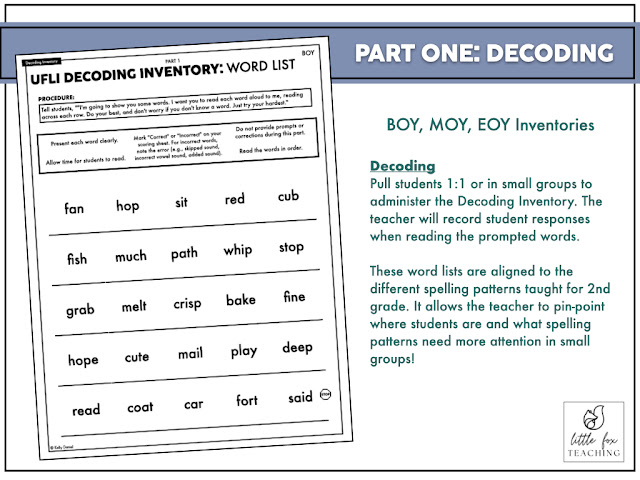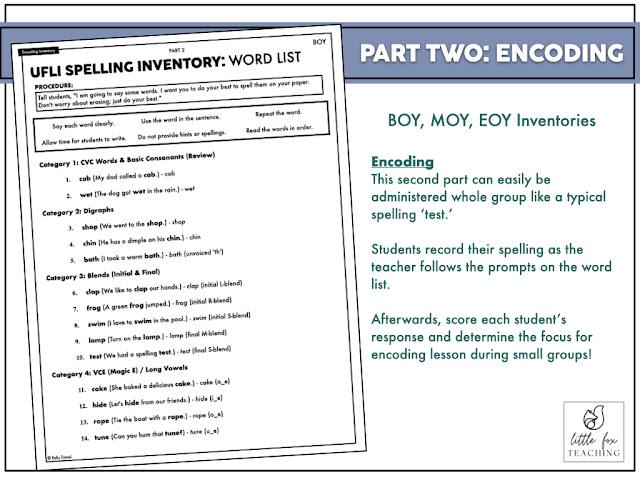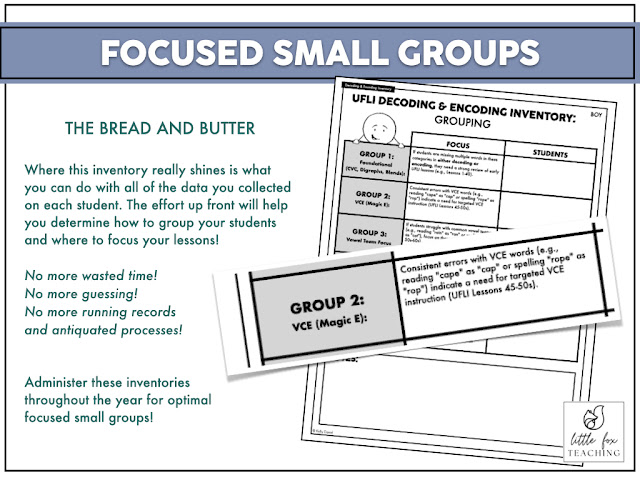July 19, 2025
Why UFLI Placement Inventories Are Your Back-to-School BFF
Hey everyone! Can you believe it's almost that time again? My classroom is still looking a little too pristine, but my teacher brain is already buzzing with all things back-to-school. And if you're like me and diving into UFLI Foundations this year (or continuing your UFLI journey!), there's one tool you absolutely have to make friends with right at the start: UFLI Placement Inventories.
Seriously, these aren't just another thing to add to your overflowing to-do list; they're your secret weapon for a smoother, more effective start to the school year. Think of them as your personal GPS for reading instruction!
Although UFLI itself is not meant to include inventories, I set out to make one for my incoming second graders. I do plan to continue the lesson-by-lesson approach whole group a little bit each day - as per the curriculum scope and sequence. However, I am always looking for ways to embed this program throughout my ELA block and utilize every minute.
So, let's take a peek at what I came up with!
Why You'll Be Besties with UFLI Placement Inventories:
Pinpointing Starting Points (No More Guesswork!): Remember those first few weeks trying to figure out where everyone is at with their foundational reading skills? It can feel a bit like throwing darts in the dark, right? The UFLI placement inventories take all that guesswork out. They give you a clear, objective snapshot of what your students already know and, more importantly, what they need to learn. Are they solid on their letter sounds? Do they understand CVC words? The inventories will tell you!
Supercharging Your Small Group Instruction: This is where the magic really happens! Once you have that data from the inventories, your small group instruction basically designs itself. Instead of generic skill work, you can form targeted groups based on specific needs.
Got a group that's rocking CVC words but needs a boost with digraphs? Boom, that's your group's focus!
Another group might need to solidify their short vowel sounds. Perfect, you know exactly what to do.
This means every minute of your small group time is meaningful and tailored, preventing frustration for both you and your students.
Seamless Alignment with Whole Group UFLI: Here's the brilliant part: the placement inventories are specifically designed to align with the UFLI Foundations scope and sequence. So, while you're working with your small groups on their specific needs, you're not just doing random activities. You're building the foundational skills that will directly support and accelerate their success in your whole-group UFLI lessons. It's like building the perfect bridge between individual needs and class-wide learning.
Imagine this: you're teaching a whole group lesson on silent 'e' words. But in your small groups, you've already pre-taught or reinforced the necessary short vowel sounds for some students, while challenging others with more complex vowel patterns. Everyone benefits, and the whole-group lesson clicks into place more easily for all your learners.
Part 1: Decoding
Forming a Focus for Small Groups
My Pro-Tip: Don't Stress, Just Assess!
I know, I know, another assessment. But trust me, the time you invest upfront in these inventories will pay dividends throughout the year. It saves you so much time and energy in the long run because you'll be teaching smarter, not just harder.
So, as you're gearing up for the new school year, make sure those UFLI placement inventories are high on your priority list. They're the key to unlocking focused instruction, boosting student confidence, and setting everyone up for a truly successful year of reading growth.
What are your favorite back-to-school assessment strategies? Share your wisdom in the comments below!
Happy teaching!
Hey there!








